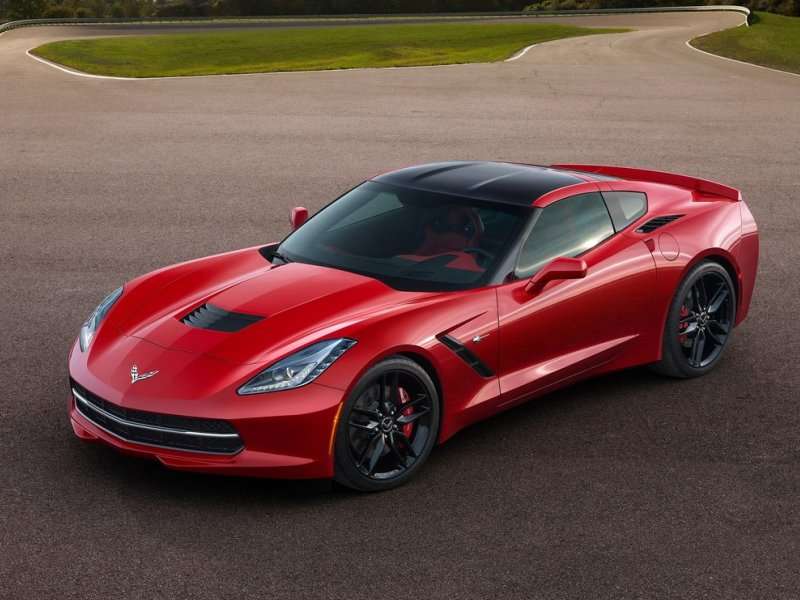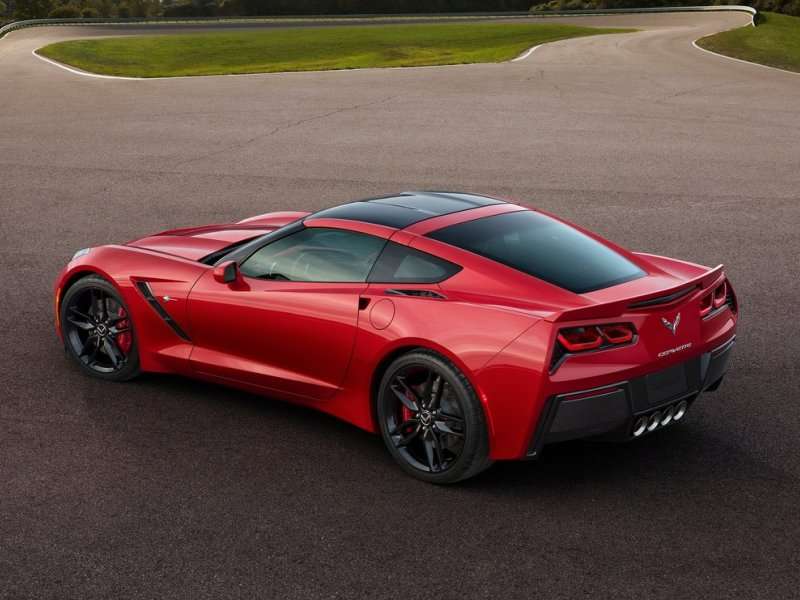Recent Articles
Popular Makes
Body Types
Getting the Green Light: 2014 Chevrolet Corvette Stingray Reaches 29 MPG
Redesigned Corvette Sets New Efficiency Benchmark

Calling it “the most fuel-efficient sports car on the market,” Chevy recently announced that the 2014 Chevrolet Corvette Stingray—configured with a seven-speed manual transmission—had earned EPA ratings of 17 mpg city/29 mpg highway/21 mpg combined. And although the Bowtie brand is boasting of improvements of more than 6 percent/11 percent/10 percent as compared to the 2013 model, that’s actually understating the case.
The 2013 Chevrolet Corvette with a six-speed manual transmission was graded at 16/26/19 by the EPA, but that was with regular gasoline. When drinking premium fuel for optimum performance, last year’s car had fuel-efficiency ratings of 14/21/17. So, since the 2014 Chevrolet Corvette Stingray achieves its higher EPA marks using (required) premium gasoline, a more direct comparison between the two shows improvements that exceed 21 percent/38 percent/23 percent.
If you want to push the numbers even further, Chevy indicates that the 2014 Chevrolet Corvette Stingray can hit 30 mpg on the highway in “Eco” mode (with the official EPA rating an average of that mark and the 28 mpg accomplished in the car’s default “Tour” mode). Also helping matters is cylinder-deactivation technology that allows the Stingray’s V8 engine to run on four cylinders in certain driving scenarios, but perhaps more important—given the car’s athletic orientation—is the attention spent on lowering both its curb weight and its coefficient of drag.
After all, keeping the car light on its feet and particularly aerodynamic has the dual effect of improving performance on the road and at the gas pumps. Remember: Not only is the 2014 Chevrolet Corvette Stingray more efficient on the highway than a Mazda MX-5 Miata, but it also brandishes a 455-hp, 6.2-liter V8 engine that can propel the car from 0-60 in 3.8 seconds (with the available Z51 Performance Package).
How do those numbers stack up against some other rivals? Let’s find out on the next page.
2014 Chevrolet Corvette Stingray Efficiency Comparo
The Bowtie brand highlights the unique combination of horsepower and fuel-efficiency in the 2014 Chevrolet Corvette Stingray, reporting no other car on the market can exceed 455 horses and 29 mpg highway at the same time. For example, Chevy notes that the Jaguar F-Type S (495 hp) and the Audi R8 V10 (510 hp) have more power than the new Corvette, but the Jag is rated at 23 mpg on the highway and the Audi is a full 10 mpg behind the Stingray’s highway mark.
At the other end of the spectrum, the Porsche Cayman can get to 30 mpg on the highway, and the BMW Z4 sDrive28 is up to 34 mpg, but with a deficit of 180 hp and 214 hp, respectively, against the Chevrolet Corvette Stingray.
Now, those potential Corvette rivals all come courtesy of Chevrolet, but there’s also another front-engined, rear-wheel-drive entry that makes for a very interesting comparison to the Stingray, and that’s the Scion FR-S. The FR-S was specifically designed as an “authentic” sports car for modern-day enthusiasts, complete with “surprising fuel efficiency,” and it provides 201 hp, 151 lb.-ft. of torque and 30 mpg; compared to the 2014 Chevrolet Corvette Stingray, that’s 249 fewer horses, 314 fewer lb.-ft. of torque, and 1 extra mpg on the highway.
The FR-S certainly has significant advantages in city/combined driving—as well as sticker price—but according to Tadge Juechter, executive chief engineer for the Chevrolet’s high-performance halo car: “The Corvette Stingray establishes the benchmark for modern performance cars by using technologies to deliver more performance and more miles per gallon. We expect more and more performance cars will follow Corvette’s example.”
